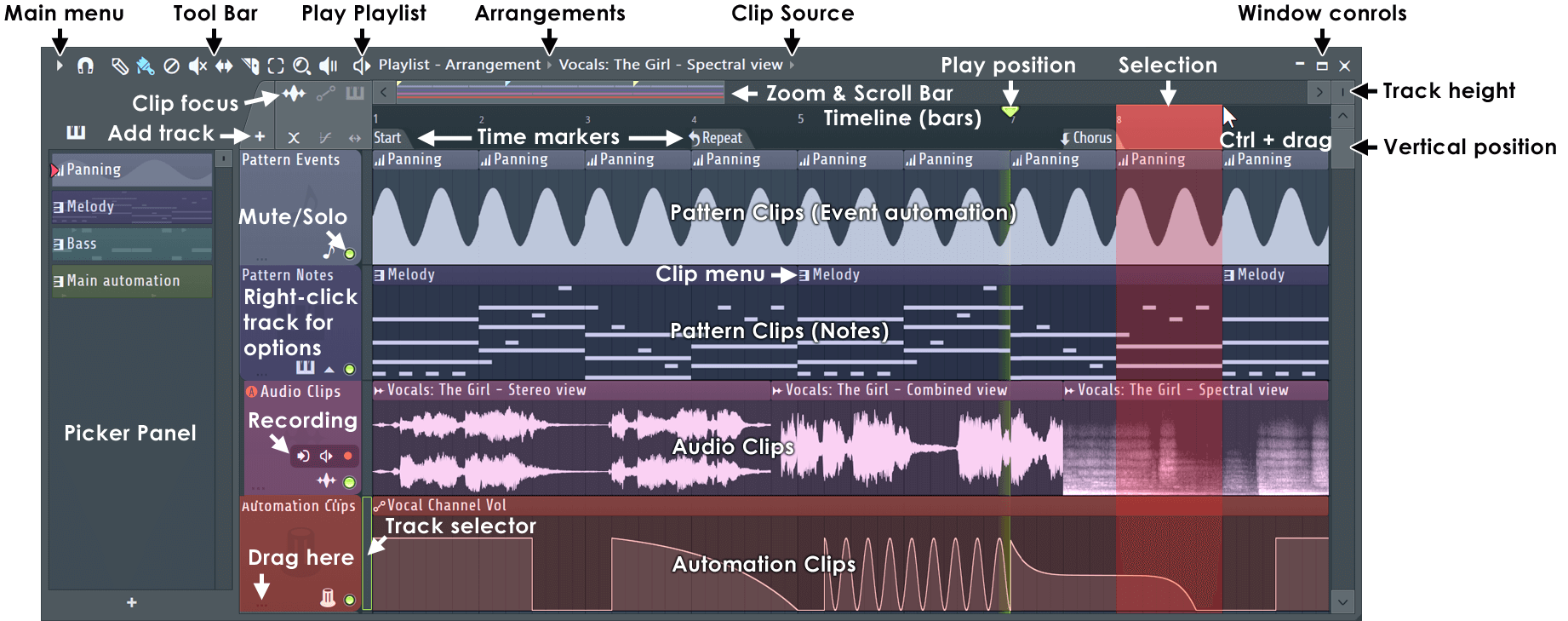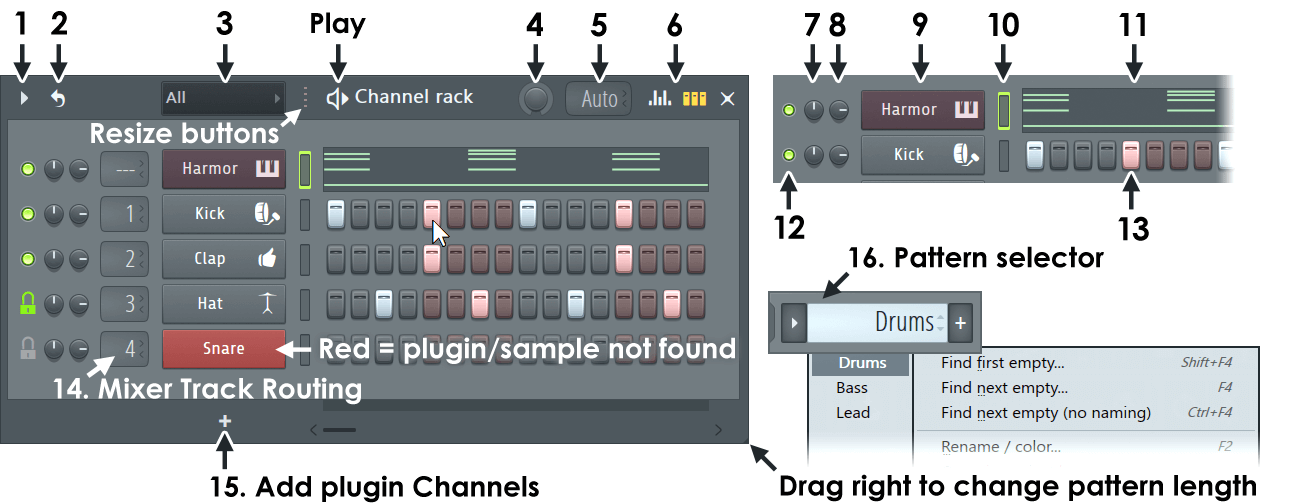· By Bas Lefeber
Easy Guide: How to Mix Vocals in FL Studio for Beginners
Mixing Vocals in FL Studio
If you're new to music production, learning how to mix vocals in FL Studio can seem daunting. However, with the right guidance, it can be an enjoyable and rewarding process. This easy guide is specifically designed for beginners who want to delve into the world of vocal mixing within FL Studio. Whether you're aiming to achieve seamless vocal blending or enhance the overall quality of your voice mixing, this comprehensive tutorial will provide you with the essential knowledge and techniques needed to get started.
Pro Tip: "Mixing vocals is a fundamental aspect of music production, and mastering this skill will significantly elevate the quality of your audio projects."
FL Studio Basics
Getting Started with FL Studio
When you first open FL Studio, you'll encounter a user-friendly interface designed to streamline your music production experience. The main workspace consists of various windows and panels that allow you to manage different aspects of your project. To set up vocal tracks in FL Studio, simply navigate to the "Playlist" window and right-click to insert an audio track. From there, you can easily import your vocal recordings and begin arranging them within the project.

Basic Tools and Functions
FL Studio provides a range of essential tools for vocal mixing, including the Mixer, Channel Rack, and Playlist. The Mixer allows you to adjust individual track levels, apply effects, and control panning for spatial positioning. In the Channel Rack, you can manage different vocal elements such as harmonies or ad-libs. Additionally, the Playlist serves as the main workspace for arranging vocal recordings along with other musical elements.

Pro Tip: "Familiarizing yourself with these basic tools will lay a solid foundation for your vocal mixing journey within FL Studio."
Vocal Mixing Techniques
Understanding EQ for Vocals
When it comes to vocal mixing techniques, understanding EQ (equalization) is crucial for achieving optimal sound quality. EQ involves adjusting the balance of frequencies within a vocal recording, allowing you to enhance clarity and address any tonal imbalances. By utilizing EQ effectively, you can ensure that the vocals sit well within the overall mix and maintain their prominence without overshadowing other elements.
Basic EQ techniques for enhancing vocal clarity involve identifying specific frequency ranges that contribute to muddiness or harshness in the vocals. By attenuating these problematic frequencies, you can achieve a cleaner and more polished vocal sound. Additionally, boosting certain frequencies in the high-end range can impart brightness and presence to the vocals, further improving their overall intelligibility and impact.
Pro Tip: "Experiment with subtle adjustments when applying EQ to vocals, as drastic changes can significantly alter the character of the voice."
Utilizing Compression Effectively
Compression plays a pivotal role in vocal mixing by controlling the dynamic range of the voice, ensuring that quieter passages are brought forward while louder sections are kept in check. This helps maintain a consistent level of intensity throughout the vocal performance, resulting in a more balanced and professional sound.
When using compression on vocals, it's essential to set appropriate threshold, ratio, attack, and release parameters to effectively manage dynamics without sacrificing natural expressiveness. By carefully fine-tuning these settings, you can achieve a controlled yet dynamic vocal performance that seamlessly integrates into your music production.
By incorporating these vocal mixing techniques into your workflow, you can elevate the quality of your vocal recordings while gaining valuable insight into the art of professional audio production.
Mastering Your Vocals
Applying Vocal Effects
In FL Studio, you have access to a variety of popular vocal effects that can add depth and character to your vocal recordings. Some of the most commonly used vocal effects include reverb, delay, chorus, and pitch correction.
-
Reverb: This effect simulates the acoustic properties of different environments, adding a sense of space and dimension to vocals.
-
Delay: By creating echoes and repetitions of the vocal signal, delay effects can enhance the overall texture and rhythmic feel of the vocals.
-
Chorus: Chorus effects thicken the vocal sound by creating multiple copies of the original signal with slight variations in pitch and timing.
-
Pitch Correction: When used subtly, pitch correction can help refine vocal intonation and correct minor tuning issues.
When applying vocal effects, it's important to use them judiciously to avoid overwhelming the natural qualities of the voice. Experimenting with different effect parameters and combinations can lead to creative results while maintaining a balanced mix.
Pro Tip: "Consider automating effect parameters over time to create evolving textures within your vocal track
ValhallaVintageVerb: One of the most popular reverb plugins
Creating Vocal Harmony
Vocal harmony involves layering additional vocal parts that complement the main melody, resulting in a richer and more engaging sonic experience. Understanding how harmonies impact a mix is crucial for achieving a polished and professional sound.
To create harmonious vocals, experiment with different intervals such as thirds, fifths, or octaves when adding harmony parts. Additionally, consider varying the panning positions of these harmonies to create a sense of width and spatial depth within the mix.
By incorporating vocal harmony techniques into your productions, you can elevate your vocal arrangements and add an extra layer of depth to your music.
Effective Vocal Mixing Tips
Balancing Vocals with Instrumentation
When aiming for effective vocal mixing, it's essential to achieve a harmonious balance between the vocals and other musical elements. Here are some strategies for achieving a balanced mix of vocals and instruments:
-
Frequency Separation: Utilize EQ to carve out frequency space for each element, ensuring that vocals and instruments occupy distinct sonic territories without clashing.
-
Dynamic Range Management: Use compression to control the dynamic range of both vocals and instrumentation, maintaining consistent levels throughout the mix.
-
Panning Techniques: Experiment with panning to position vocals and instruments within the stereo field, creating spatial separation and enhancing clarity.
-
Volume Automation: Implement volume automation to fine-tune the levels of individual vocal tracks in relation to the instrumentation, ensuring that they blend seamlessly without overpowering or getting lost in the mix.
By implementing these strategies, you can achieve a cohesive blend of vocals and instrumentation, resulting in a well-balanced and impactful overall sound.
Finalizing the Vocal Mix
Once you've established an efficient voice blending between vocals and instrumentation, it's time to review and fine-tune the vocal mix for a polished and professional sound. Consider these steps for finalizing your vocal mix:
-
Critical Listening: Take time to critically listen to the entire mix, paying close attention to how the vocals interact with other elements. Identify any areas that require adjustment or refinement.
-
Subtle Adjustments: Make subtle adjustments to EQ, compression, and effects based on your critical listening observations. Focus on enhancing clarity, presence, and cohesiveness within the vocal tracks.
-
Quality Control: Ensure that there are no technical issues such as clipping or excessive noise present in the vocal recordings. Address any anomalies that may detract from the overall quality of the mix.
By meticulously reviewing and refining your vocal mix, you can ensure that your vocals stand out as a compelling focal point within your music production while contributing to a captivating sonic experience.
Mastering Vocal Mixing
Congratulations! By following this comprehensive guide, newcomers can effectively master the art of mixing vocals in FL Studio. This tutorial provides a solid foundation for understanding vocal blending, voice mixing, and achieving optimal vocal quality within your music production projects. Browse the large collection of acapella vocals on The Vocal Market and apply these vocal mixing tips to your new vocals for your music.
https://thevocalmarket.com/collections/non-exclusive-vocals




